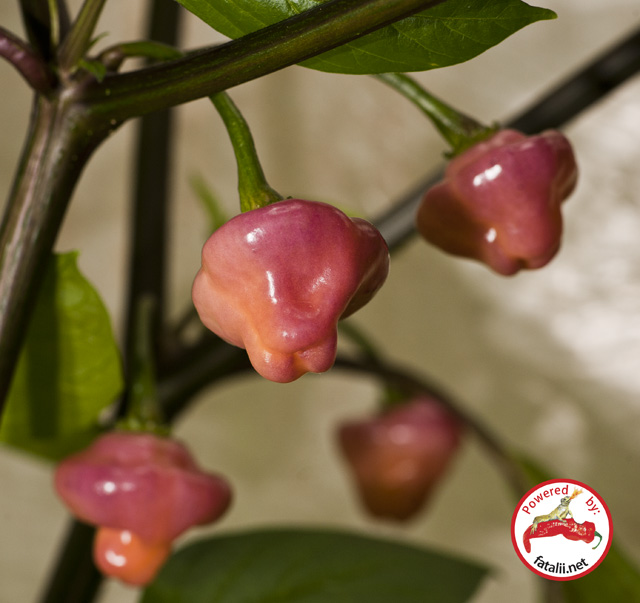Two of my favorite peppers have both of these features, but are two very different peppers. The first is the Fatalii pepper, which is an African pepper that is yellow in color. It is about three to four inches long and is shaped like a bit like a spear head that comes to a point. It has a very citrusy taste up front, all most lemon like, then a very nice kick of heat. It has thinner walls, so it makes for a great dehydrating pepper to make into powder. It makes a very flavorful hot sauce, and pairs well with fruit in a sauce. The foliage is a dark green, and it really just blends in with the rest of the plants. The second pepper is the Chiero Roxo pepper from Brazil. It is about the size of a quarter and is shaped like a mushroom cloud. At mature color it is a very nice purple, with pink and white hues on one side. It has a very strong fruity taste upfront, all most sweet. It has just enough heat to remind you it’s a hot pepper, but very mild over all. It has a thicker skin so it is best suited for fresh eating or making sauce. The foliage is a stunning mix of black and purple, with just a hint of green towards the main stem. It sticks out from the other plants a lot because of this. Both are great peppers and have their place in my garden.
Taste and heat are two very different things if you ask me. It is rare that you find such a pepper that has both, but these two do just that. They may look and taste very different, but they both belong to the same botanical family, Capsicum Chinese. So see, they are very different, but similar at the same time. I like the differences in these peppers the most though I think. Who would want the same thing over and over? Variety is the spice of life, and you need different flavors the keep your taste buds guessing. So go ahead and treat your tongue to a surprise, try something different.


